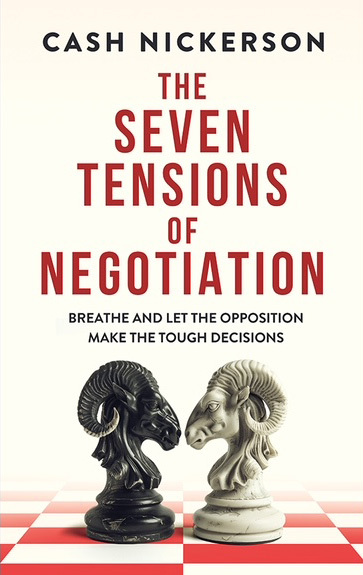The Big Idea
Radical Negotiating: People Really Do Matter
Three historical time periods have emerged in my work on negotiation: before publication of the book Getting to Yes (GTY), the period dominated by GTY, and the new era I am proposing.
Before GTY, negotiation was basically a social ritual based on relationships and trust. Negotiators worked through difficult objectives or conflicts using a variety of people skills. It was personal—people would often take exception to this or that. It focused on achieving outcomes people wanted to achieve. There was sometimes a process, but in general it was fairly ad hoc, and from a time perspective it was as long as it took to reach an understanding. Or give up.
Then, in 1981, along came Getting to Yes, written by Roger Fisher and William L. Ury and adopted as a text by the Harvard Negotiation Project. They posited that there were specific things that should be done and said. It was the first attempt to create a formal structure for negotiation.
In terms of how I see things, GTY focused on process. The approach had four core principles: separate the people from the problem; generate lots of potential solutions in a collaborative way; instead of focusing on positions and outcomes, focus on desires and wants; and use objective criteria to evaluate the options.
We have all been in that GTY world for more than 40 years.
I found that GTY’s basic premises were not consistent with my personal and professional experience as an attorney, entrepreneur, martial arts expert, philanthropist, and professor.
In my own work I’ve gone back to respect and honor pre-GTY negotiation principles: People really do matter. Relationships really do matter. They matter a lot.
I always ask, “Who is the other person—a child, an enemy, a friend, a colleague?“ Understanding my relationship with that person is critical. This is the premise we see before GTY: The best negotiators in the bazaar aren’t going separate the people from the problem. They put the people in the problem. “Come sit, have some tea, tell me about your family.” This is how negotiation used to be, an inherently human process.
Conflict naturally produces tension and trying to ignore and separate your human self from it is not a path to better negotiation.
The corollary is that any time humans are involved in a process, there will be tension: The conflict implicit in any negotiation naturally produces tension. Trying to ignore and separate your human self from that discomfort is not a path to better negotiation.
The ability to feel those tensions is what tells you what’s really going on.
I propose a new era of human-centered negotiation, as laid out in The Seven Tensions of Negotiation. While it’s based on successful principles that date back to the bazaars and marketplaces, my approach is a quintessentially modern concept. In my book, I describe seven tensions likely to play out in any negotiation: relationship tension, outcome tension, process tension, timing tension, leverage tension, agent tension and team tension. And I offer detailed questions and strategies to help you identify, analyze, and exploit each tension so you can move the negotiation toward the outcomes you want.
Learning to address and manage the seven tensions is the key to negotiation success.
